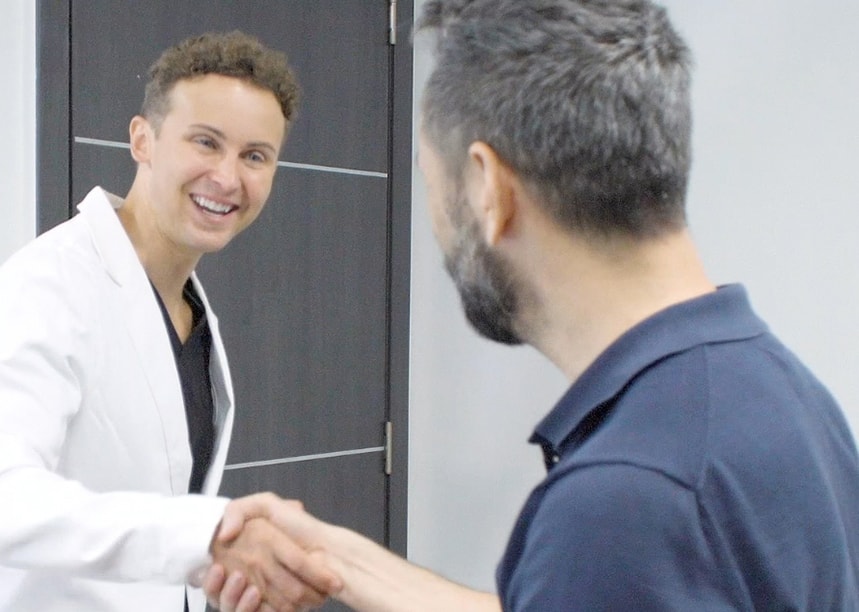Sciatica Specialist Offers Advice on How to Choose and Use a Backpack
June 15, 2021
Read On If You Are Suffering from Sciatica Pain
Whether for school, hiking, going to the gym, or simply because they are in style, more and more people around us seem to be carrying their lives inside various-sized backpacks.
Backpacks have been created to help reduce the pressure put on your back when carrying a load. Compared to other items designed to help you carry stuff around, such as shoulder bags, briefcases, or satchels, backpacks have two straps meant to help distribute the weight evenly on your shoulders and put less pressure on the spine. Some even come with hip belts to transfer some of the load to the lower part of your body as well.

When worn incorrectly, however, backpacks can do more harm to your back than you imagine. Among the issues most commonly caused by carrying a backpack the wrong way is back pain, neck pain, herniated discs, musculoskeletal injuries, and pinched nerves. If you are already suffering from back pain, wearing a backpack the wrong way can be even more harmful.
To protect your back and avoid developing long-lasting health issues, our sciatica specialists are here to provide a list of tips on how to properly choose and wear a backpack, suited for both children and adults. Read on if you are currently looking for a sciatica specialist near you, in Hackensack.
Choose the right type of backpack
The size of your backpack is determined by your torso length, which is measured from the base of your neck to your waist. To make sure it’s comfortable when you wear it, the top of the backpack should fit right below your shoulders and the bottom around the waist level. This applies to both adults and children, so parents should pay attention to this when back-to-school shopping.

Other than size, backpacks can come with certain features that can help reduce the risk of developing back problems. Choosing a light-material backpack, for example, can increase comfort and reduce unnecessary load. Padded back and shoulder straps, and waist belts, can be very helpful when you are going camping or if you need to carry a heavy load. Individualized compartments may also help distribute weight evenly inside the backpack, so you may want to consider that as well.
Don’t put in more than you can carry
Carrying too much weight in a backpack can lead to wear and tear on the joints, ligaments, and muscles throughout the back and hips. Both your back and your hips work to compensate for the added weight, but because they are not able to sustain it for long, they start degrading, which can lead to stiffness, loss of motion, and, most frequently, pain. This often leads to herniated discs, which compress the sciatic pain, altered posture, and sometimes even pain in the feet.
When it comes to how much load you can carry, sciatica pain specialists advise children should not wear a backpack that weighs over 10-20% of their body weight. For young adults, because their body is still developing, it is recommended not to wear a backpack heavier than 15% of their body weight, whereas adults should limit the weight to 20%.
Load your backpack the right way
Aside from how much stuff you can put in a backpack, it is also important how you load the backpack. The bigger the backpack, the more things it fits, but if you don’t distribute the items inside evenly, you may end up putting too much pressure on one side of your body.
When packing a backpack, make sure heavy items go in first, so they are kept lower and closer to the body. If your backpack has compartments, try to fill them all, to distribute the weight and make sure items don’t shift around while you carry them. When you need to pack sharp or indenting objects that may poke your back, try wrapping them or packing them further from the back to avoid nudging the spine.
Pick up your backpack properly
It’s often all too simple to just take your backpack from a chair or the floor without considering the consequences it may have on your back. However, lifting a big bag incorrectly almost always results in back pain.
The proper way to lift a backpack is by standing with your front at it and your legs parallel to your shoulders. Squat before picking it up, to place the weight on your heels and keep your back straight, then pull the backpack close to your body and lift it using both hands. Once you are standing, you can swing the backpack onto your back and you should be good to go.
These rules should be applied especially when you are having your backpack fully loaded, as twisting movements or lifting from the side can put a lot of pressure on the spine.
Always wear your backpack with both straps
This has been done way too many times and it keeps hurting people every day. You may get away with wearing a small backpack with only a few items inside it on one shoulder. But when you are wearing a fully packed one, you should always use both straps to evenly distribute the weight.
The spine, ribs, shoulders, and neck can all be affected when carrying a bag on one shoulder. Ideally, it should be positioned in a way that your arms can move freely when in a walking motion. If arm movement is restricted, it might result in spinal fixations, which happen when the spinal bones lock up. This can result in scoliosis, difficulty breathing, and back tension.
Bottom line
Back pain is the leading cause of disability in the world and can be caused by a myriad of issues, including the way you wear a backpack. If back pain persists for more than a few days, it is advised you contact a pain doctor as soon as possible.
At Pain Treatment Specialists, our team of highly trained pain doctors will provide the best pain management options for your needs. Using state of the art equipment, our doctors will be able to determine what is causing the pain and whether medication, physical therapy, steroid injections, or other forms of minimally invasive treatment are best suited to treat it. You can book an appointment in one of our conveniently-placed locations: in Paramus on Route 17, near the Paramus Park Mall, in Clifton, NJ, on Route 46 E, past the Ford dealership, and in West Orange, near the Essex Country Club, and in Woodland Park, on McBride Avenue.
Book a Consultation
Scheduling a consultation with one of our pain treatment specialists is one of the best ways to determine the proper solution for pain relief.
Meet Our Team of Back Pain Specialists
All of our Pain Doctors in New Jersey are Harvard Trained and Board Certified in Pain Management

Back Pain Doctor Clifton & West Orange NJ
Dr. George Hanna
Dr. Hanna is a Harvard Trained back specialist in New Jersey and New York. He serves as Medical Director of Pain Management.

Back Pain Doctor Clifton & West Orange NJ
Dr. Laura Lombardi
Dr. Lombardi is a Harvard Trained back pain treatment doctor, currently seeing patients in Clifton and West Orange, New Jersey.

Back Pain Doctor Clifton & West Orange NJ
Dr. Shane Volney
Dr. Volney is a Harvard Trained back treatment doctor seeing patients in the NJ areas of Clifton & West Orange, and in NYC.

Back Pain Doctor Clifton & West Orange NJ
Dr. Michael Nguyen
Dr. Nguyen is Harvard Trained and Board Certified in Pain Management. His pain center accepts major medical insurances and Medicare.

Dr. George Hanna

Dr. Laura Lombardi
Dr. Lombardi is a Harvard Trained back pain treatment doctor, currently seeing patients in Clifton and West Orange, and Paramus New Jersey.

Dr. Shane Volney
Dr. Volney is a Harvard Trained back treatment doctor seeing patients in the NJ areas of Clifton & West Orange, and in NYC.

Dr. Michael Nguyen
Dr. Nguyen is Harvard Trained and Board Certified in Pain Management. His pain center accepts major medical insurances and Medicare.
